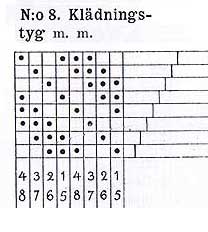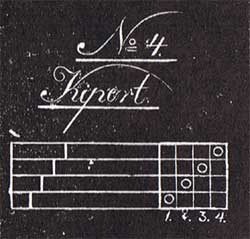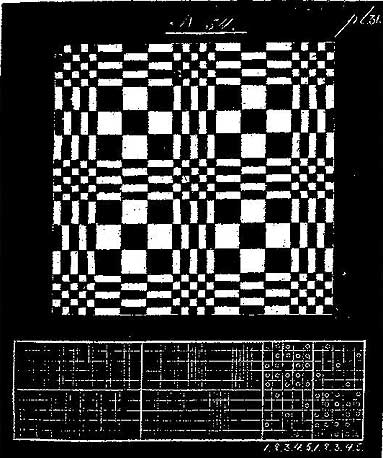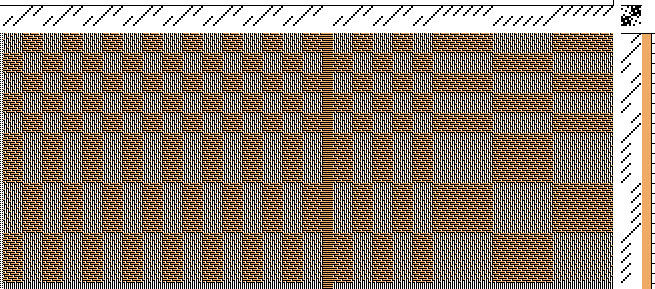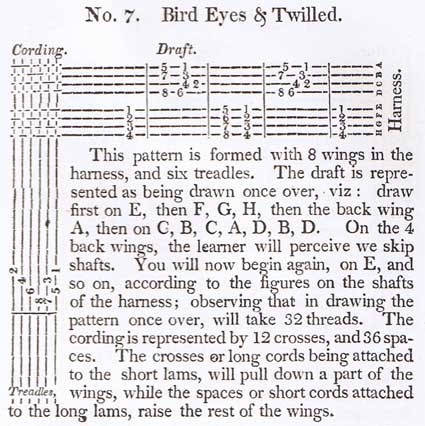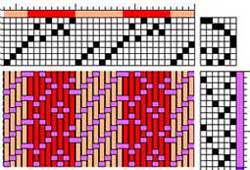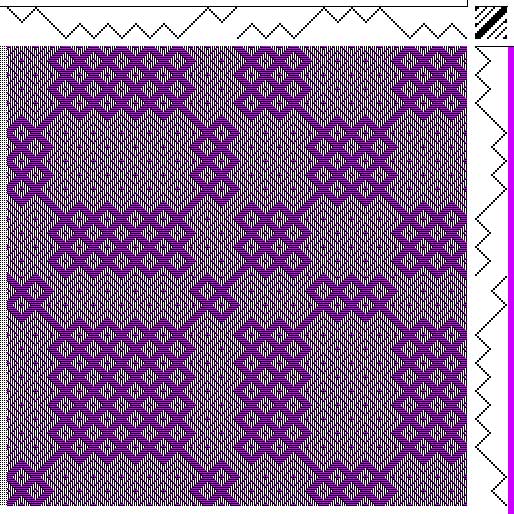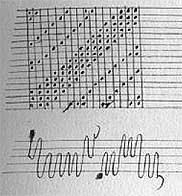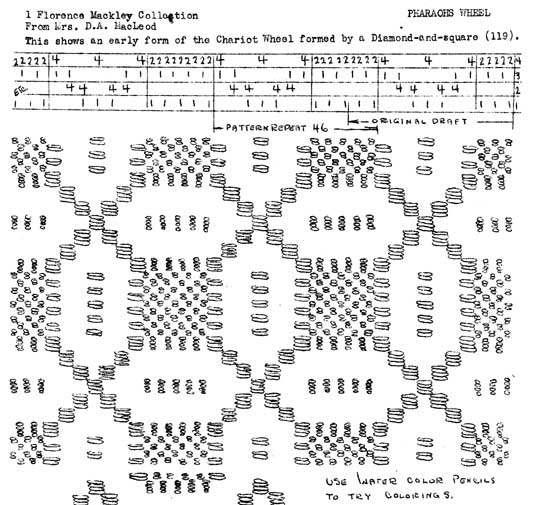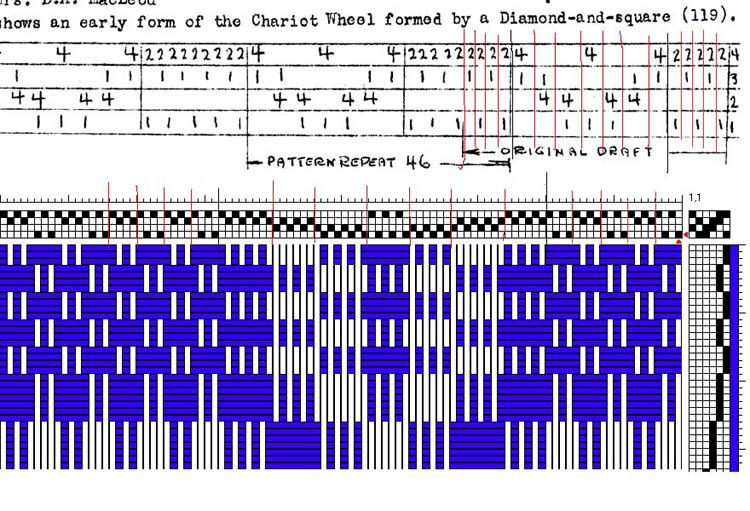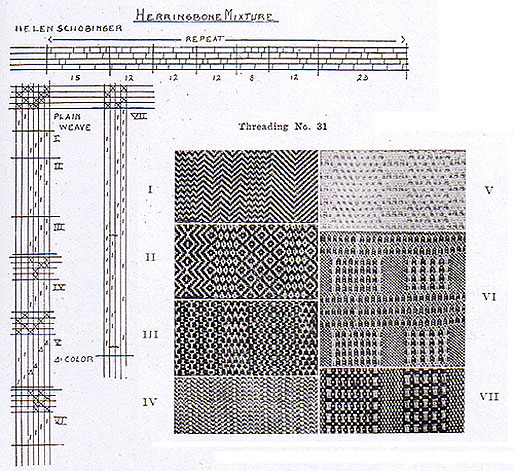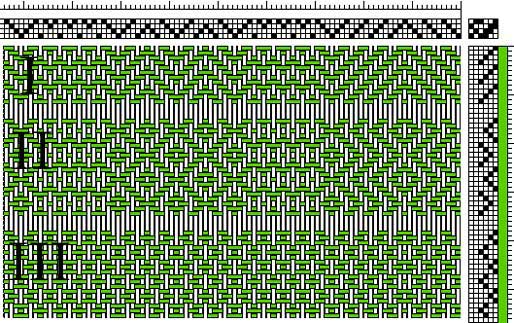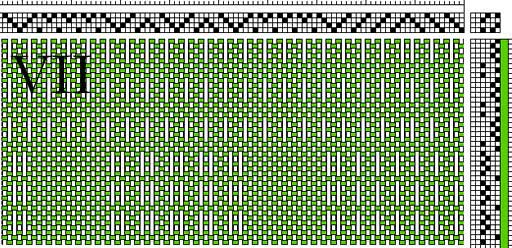When you really study the patterned weaves, you can see that you need to keep track of the details yourself.
Also, the "pictures" do not necessarily correspond exactly to the threadings.
On plate 31, we see a simple dräll, with alternating 5 narrow and 3 wide groups.
In the threading diagram she gives the border to the
left, and it consists of 7 narrow threading groups.
To the
right she gives (from the right) the 3 wider groups, followed by 5 narrow groups.
Thus, the illustration is not quite the same as the cloth the threading will give you...
The treadling order is given in the text accompanying the plate (page 25).
Below, I have threaded "as written", left a space between the border and the central pattern,
and put in the treadling as explained (to be read from the bottom).
My recommendation is: always study the description carefully, before trying to weave it! Check the
threading/treadling to find out how the different parts relate ot each other - and to see whether
the description is correct.

